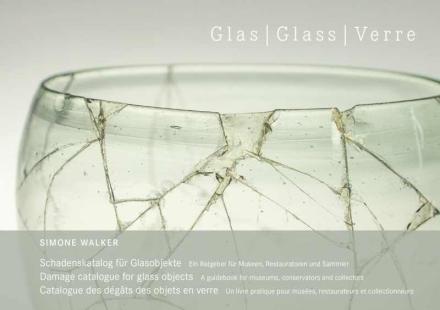Book Review: Damage Catalogue for glass objects - by Simone Walker Archetype Publications 2014
Submitted by bborghese on

96 pages, text in German, English, French. ca 40 colour photographs - many full page
There has been a welcome increase in the number and quality of tools for describing objects. Words are frequently inadequate to distinguish between visible features. This annotated picture book provides a useful addition to those available. It is primarily addressed to curators and collectors who are frequently directed towards consulting a conservator. The objects and damages illustrated range from the archaeological, through mediaeval and nineteenth century to stained glass. The images are well chosen and reproduced.
Damage is organised into 3 categories: Mechanical, Chemical and Previous restoration. Mechanical covers scratches to losses; Chemical covers soiling through crizzling to metal corrosion; previous restoration covers topics ranging from re-leading to gap fills.
The text is consistently arranged into brief paragraphs: Characteristics, Causes, Handling.
A glossary gives the translation of relevant terms in alphabetical order in each language. An appendix lists the objects, giving dates and an inventory number.
The first damage illustration demonstrates the advantages and difficulties of using photographs which deal with the complexity of a specific instance, in comparison with a diagram which can eliminate the distracting features. The turned rimmed base of a clear goblet is well photographed showing a number of black lines. Although one can make a good guess at which of these is a soiled scratch, this is not indicated, nor is the soiling. Many of the objects illustrated display a number of issues as well as surface features such as reflections that could be confused for damage.
In such a small compass, there are necessarily some compromises. As the focus is on glass, only a few other materials are briefly mentioned. Metal corrosion is described and damaged enamel is illustrated, paint and plaster are not covered.
In summary, this is a good aide memoire that could be used during training of those documenting collections and for subsequent reference.
Velson Horie